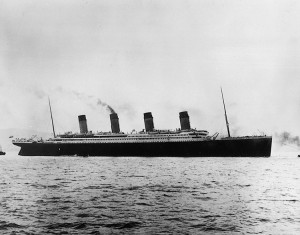North Atlantic Icebergs
April 14, 2017
An unusually high number of dangerous icebergs have drifted into busy shipping lanes of the North Atlantic Ocean over the past month, prompting warnings from the U.S. Coast Guard (USCG) and other international agencies. More than 450 icebergs, many large enough to sink a ship, have been sighted in the past weeks, about five times the average for this time of year. Ships are warned to sail well south of their normal course to avoid the huge iceberg field.
An iceberg is a huge mass of ice that has calved (broken off) from a glacier or ice shelf and is floating in water. Icebergs are much larger below the water than above it, and they can pose a great danger to ships that come too close. The hard ice can easily tear open the steel hull of a ship that strikes it. At least one cargo ship has already reported a close encounter with an iceberg this month.

Click to view larger image
Icebergs form where chunks of ice break away from a glacier as it flows into the sea. The sun and wind melt the top of an iceberg. The bottom, which is under water, melts much more slowly. As the top melts away, leaving the bottom hidden beneath the surface, the iceberg becomes extremely dangerous to ships. Credit: WORLD BOOK diagrams by Marion Pahl
The unusual iceberg hazard in the North Atlantic recalls the conditions that led to the sinking of the Titanic on April 14, 1912—105 years ago today. The Titanic sank after colliding with a large iceberg in the same region. More than 1,500 people, including many wealthy and famous passengers, went down with the ship.

The Titanic struck an iceberg in the North Atlantic Ocean on April 14, 1912, and sank within hours. Credit: © AP/Wide World
The USCG International Ice Patrol, which was created in the aftermath of the Titanic disaster, uses satellites to track large icebergs in the region. The agency has observed that the icebergs clogging the North Atlantic shipping lanes today mostly calved from glaciers in Greenland. Many climate scientists think the dramatic increase in icebergs may be a result of climate change. Warmer conditions than normal have weakened ice fields in Greenland, leading to an increased rate of iceberg calving. Strong winds and currents then push the icebergs about, causing some to drift into the heavily trafficked shipping lanes.



